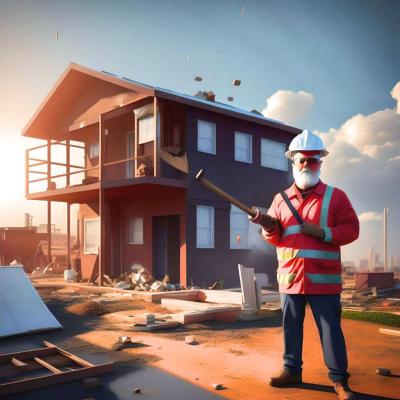However, the insurer argued that the hail merely removed a layer of material that had already decomposed, and other damage was due to wear and tear, which was excluded from the homeowner's policy. Youi referred to findings from a consultant engineer, JH, who had documented scuff marks on the roof sheeting but found no significant change in the fibres.
Complainant's argument on roof damage
The homeowner challenged the decision by Youi and hired an asbestos eliminator to inspect the roof. The specialist found markings on the roof consistent with an "extremely strong force" like hail, and also said that asbestos fibres had loosened and contaminated the gutters.
An asbestos assessor gave their second opinion in Nov 2022 that confirmed that the entire roof area must be safely removed, decontaminated and replaced due to the hazardous friable asbestos fibres. Additionally, another assessment from AH considered the severity of the storm that caused the fibre release and potential material damage.
Ruling by the Australian Financial Complaints Authority
The Australian Financial Complaints Authority (AFCA) reviewed the evidence provided by both parties and found that there was limited evidence to support the exclusion was applicable. While it accepted that photographs showed evidence of wear and tear, cracking, and pre-existing patching, it found no evidence that wear and tear was the effective or dominant cause of the roof damage.
Instead, the AFCA stated that the complainant provided "compelling" evidence from several experts that explained the hail damage's effect on the asbestos material, while Youi's evidence was "less sophisticated." Hence, AFCA ordered the insurer to bear the cost of replacing the entire roof and providing temporary accommodation to the homeowners, if necessary.
Conclusion
Anyone with a damaged roof due to hailstones can take heart from this case, given the possibility of disagreements between insured homeowners and their insurers. Although the insurer may argue for material wear and tear due to age and normal weather damage, AFCA's ruling shows that age and wear and tear of a roof are not the effective or dominant causes of hail damage. Homeowners can now seek help and advice on the extent of the damage from an independent assessor and rely on the help of AFCA to resolve disputes.
Published: Sunday 4th June, 2023
Last updated: Sunday 4th June, 2023
Please Note: If this information affects you or is relevant to your circumstances, seek advice from a licensed professional.









